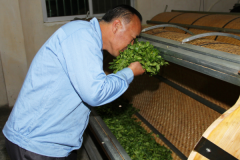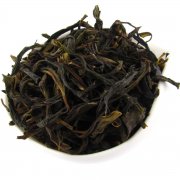The naming of Fenghuangdancong tea is based on the difference in the taste of early spring, summer, autumn and Wuzhuangdancong tea.
At first, the name seemed incomplete, depending on the geographical location and the general variety of tea trees, but then the naming convention did vary. In some cases, they are based on the specific type of tea tree and its more detailed geographical location; at other times, more details are needed. The study should find more, perhaps even about this kind of tea. Hojo Tea's long reference article covers a wide range of areas, including general types, typical aspects, and differences in good versions, regions, varieties, production methods, and how to make tea. In fact, you can skip the rest of this article and read it directly. I will quote a few key points here and then continue to discuss what is covered by other references. Dancong species: many tea lovers think that Danzong tea from Wuyi Mountain is the best, and claim that most of them are daffodils. Daffodils are a common plant in Wuyi planting area, but the varieties are different, although there were some connections in the past. In the discussion of these types, they mentioned that there are many differences in the most specific plant types: after hundreds of years of cultivation, Phoenix tea varieties have undergone years of natural hybridization or mutagenesis. This biological change has brought about a variety of tastes in their respective trees. Tea picked from different trees will produce different flavors, even if the processing methods or techniques are the same. The names of all kinds of Phoenix Dancong oolong tea are named after the taste of the tea produced by its original tree.
If you try the authentic Phoenix single Cong Oolong, I'm sure you will be shocked by its fruity taste. I'm shocked. That tea is really a unique experience. This astringency is also a little unusual, because here is a comment:. If you pick tea in early spring, it should not be bitter. Generally speaking, the tea harvested in late spring, summer and autumn tastes bitter and astringent, leaving a very uncomfortable feeling on the tongue. I would not describe this astringency as bitter, nor would I describe it as an unpleasant feeling on the tongue, but it is a little different from almost all other oolong teas, which are usually very soft. One netizen commented that he even craved this aspect of tea, not only accepting it as a companion of flower aroma and fruit sweetness, but also seeing it as a positive side. I have to keep drinking. This article echoes a completely independent but related discussion about the aging of Wuyi mountain tea, claiming that aging can have a positive impact on tea in some cases (but I won't go on; there's a lot more to say). There are too many parts about tea processing, but it is definitely worth reading. I found a secondary blog resource with a lot of details about this type, but there are too many here, so I only quote this reference. Interestingly, it narrows the range of tea characteristics, from tea production areas, tea tree types and estates / growers, to different teas from specific tea trees:
Important Notice :
前街咖啡 FrontStreet Coffee has moved to new addredd:
FrontStreet Coffee Address: 315,Donghua East Road,GuangZhou
Tel:020 38364473
- Prev

Is Wudan Dancong the most fragrant tea in Phoenix?
A rich blend of floral and fruity aromas! This kind of tea is a mixed floral distilled cup with a hint of citrus, sweet peach and honey as the base.
- Next

Why does Phoenix Dancong have duck shit fragrance? What kind of tea is duck shit fragrance? Is it a new fragrance type?
Dancong's name: Danzong tea can be named in many ways, some of which are related to naming changes according to a specific taste and smell. Among them, there are 10 types of Danzong tea which are the most popular: Magnolia magnolia, yellow branch, orange blossom, yellow branch, almond, orchid, honey orchid
Related
- The milk tea cup becomes smaller?! Overlord Tea Girl launches a new "Return to Yunnan" series
- Accused of selling counterfeit and high-priced coffee beans! Well-known boutique coffee brand "Oukelao" bowed and apologized!
- How to make espresso dumplings? Can I eat coffee and glutinous rice balls together?
- Save the unformed and stagnant powder cakes in one second! What is the problem with stagnant water in the powder bowl of the espresso machine?
- What does hand-brewed coffee stop mean? Why is it not recommended to make coffee by hand?
- Is it normal to smell like coffee? Why does coffee smell like alcohol? What's wrong with the strong smell of cold extract ice dripping ice brewed coffee?
- How to solve the problem that hand-brewed coffee extraction takes too long? Why is the water flowing so slowly when making coffee?
- The main points of making Australian white coffee, the proportion details, how does Australian white properly foam and blend the flowers?
- Can ice water make cold extract coffee? What is the difference between room temperature water and ice water for making cold coffee?
- What milk is best for making latte and white Dirty coffee? What is the difference between different brands of fresh milk and pure milk for making coffee?

